● Growth stocks are characterized by high potential returns, driven by rapid revenue and earnings growth, often exceeding market averages.
● Growth stocks exhibit higher volatility, as their valuations are sensitive to market sentiment and future earnings expectations, with stocks like Nvidia (NVDA) seeing price fluctuations of over 40% in 2023 alone.
● Despite their liquidity, which allows for easy buying and selling in active markets, growth stocks like Tesla (TSLA) can experience sharp price movements, making them riskier than stable, dividend-paying stocks but with greater capital appreciation potential.
I. What Are Growth Stocks
Growth stocks are shares of companies expected to grow at an above-average rate compared to the overall market. These companies typically reinvest their earnings into expansion, innovation, or market share, rather than paying dividends. Growth stocks often come from sectors like technology (e.g., cloud computing, AI), healthcare, or renewable energy, where rapid advancements fuel future gains.
Growth vs Value Stocks
Growth stocks generally have high Price-to-Earnings (P/E) ratios, reflecting market optimism about their future earnings potential. Value stocks, on the other hand, are seen as undervalued compared to their fundamentals (low P/E ratios) and often pay dividends, coming from sectors like finance or utilities. For example, the average forward P/E ratio of the S&P 500 Growth Index was about 27.76 as of September 2024 against the S&P 500 Value Index's 21.74. Growth stocks provide potential for capital appreciation but carry higher risks due to volatility, while value stocks offer stability and income.
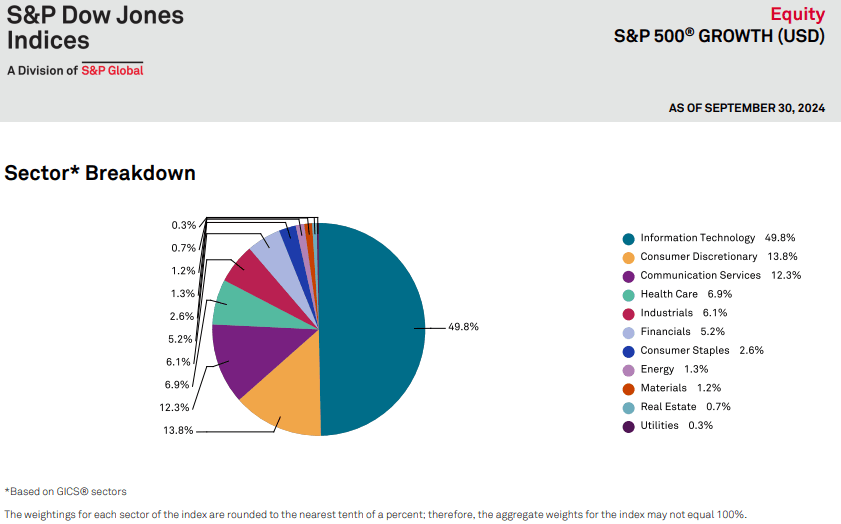
Source: spglobal.com
Why Invest in Growth Stocks?
● High Earnings Growth Rates: Growth companies often post double-digit annual revenue or earnings growth. For example, Tesla's (TSLA) 5-year revenue growth (2018-2023) was approximately 50% annually.
● Market Disruption & Innovation: Growth companies are typically innovators. Nvidia (NVDA) grew rapidly by capitalizing on AI and data center markets, posting a 171% return in 2023 alone.
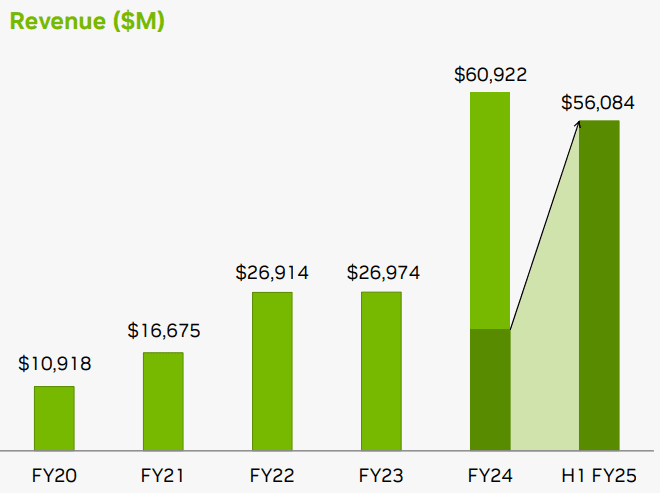
Source: Nvidia Investor-Presentation-Oct-2024
● Capital Appreciation Potential: While dividends are rare, investors are drawn to the potential for massive stock price increases. For instance, Amazon (AMZN) saw its stock price soar over 4,200% from 2004 to 2020, as its reinvestments fueled growth.
Investors choose growth stocks to gain from market-leading, disruptive companies, but must tolerate high risk and volatility due to speculative future earnings.
II. Best Growth Stocks
When identifying the best growth stocks, we target companies with high revenue growth, market disruption potential, strong market positions, and robust future growth potential. Below, we explore key growth stocks like Tesla (TSLA), Nvidia (NVDA), Shopify (SHOP), Salesforce (CRM), Square (SQ), Coinbase (COIN), Eli Lilly (LLY), and Etsy (ETSY), followed by the best growth ETFs.
Tesla (TSLA)
Tesla is the global leader in electric vehicles (EVs), with a growing presence in renewable energy storage and solar energy. As of Q2 2024, Tesla held a 49% market share in the US market and 17% globally.
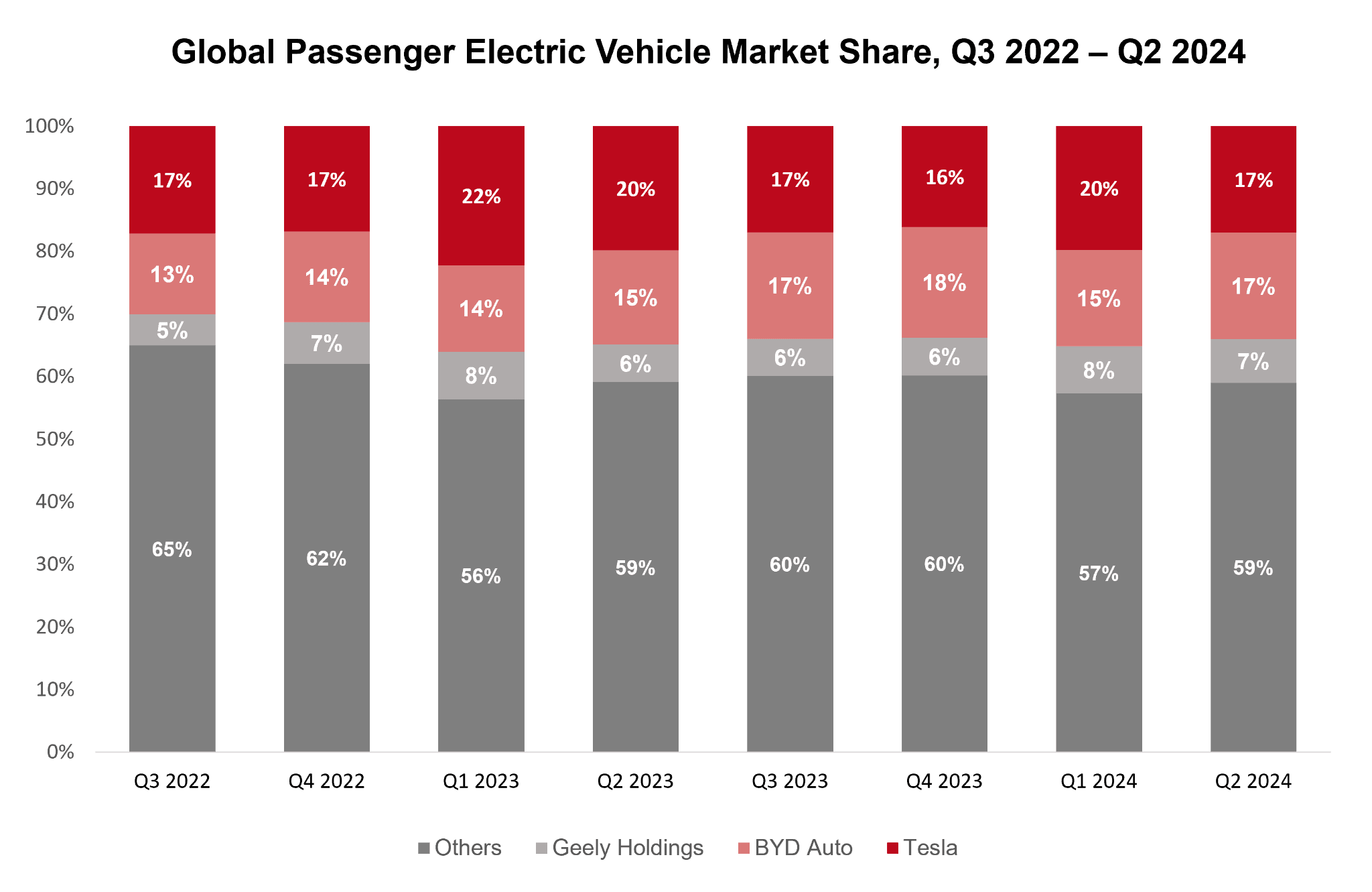
Source: counterpointresearch.com
Tesla’s innovation in EV technology, self-driving capabilities, and energy solutions fuels its growth. In 2023, Tesla’s revenue grew by 19% year-over-year (YoY), hitting $96.77 billion, with plans to double vehicle production by 2025. Analysts expect Tesla's revenue to grow 13%-50% annually over the next 7 years. The company’s focus on reducing production costs and expanding in markets like India positions it well for continued growth.
Nvidia (NVDA)
Nvidia dominates the graphics processing unit (GPU) market, commanding over 80% of market share in GPUs for gaming, AI, and data centers.
Nvidia is at the heart of the AI revolution. The company's AI chips, particularly the H100, A100 and Blackwell, are integral to advanced AI applications and cloud computing. Nvidia’s revenue skyrocketed by 122% YoY in Q2 fiscal 2025 to $30 billion, largely driven by demand for AI and data center products. With the AI market projected to grow to $407 billion by 2027, Nvidia is positioned for massive growth.
Shopify (SHOP)
Shopify provides an e-commerce platform used by over 4.12 million businesses globally, with a dominant share of the U.S. e-commerce market for small and medium-sized businesses (SMBs).
Shopify is a key player in enabling SMBs to scale online. Despite economic headwinds, Shopify posted a 21% YoY revenue increase in Q2 2024 to $2 billion. The company’s strategic push into enterprise e-commerce and global expansion, alongside innovations in AI-driven marketing and fulfillment, offers long-term growth potential.
Salesforce (CRM)
Salesforce is the global leader in customer relationship management (CRM) software, controlling nearly 24% of the CRM market as of 2023.
Salesforce continues to innovate with its AI-driven Einstein platform and its acquisition of Slack, positioning it to capitalize on the future of work and digital transformation. In Q2 fiscal 2025, Salesforce reported revenue of $9.3 billion, a 8.4% YoY increase, with projections of 8-9% annual growth through 2026, driven by cloud adoption across sectors.
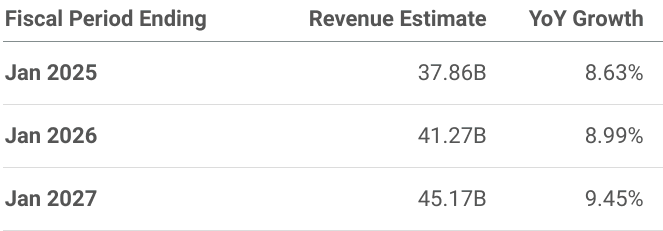
Source: seekingalpha.com
Block (SQ)
Block offers payment processing solutions and financial services primarily to small businesses, as well as Cash App for peer-to-peer payments.
Square’s Cash App continues to expand, reaching over 53 million active users in 2023. In Q2 2024, Block's revenue jumped 11.2% YoY to $6.16 billion. With increasing demand for digital financial services and Cash App’s expansion into crypto and investments, Block is poised for continued growth, with analysts forecasting revenue growth of around 20% annually.
Coinbase (COIN)
Coinbase is a leading cryptocurrency exchange in the U.S., holding approximately 50% of the U.S. crypto trading market in 2023.
As cryptocurrencies gain mainstream acceptance, Coinbase is well-positioned to benefit. In Q2 2024, Coinbase generated $1.38 billion in revenue, driven by institutional trading and staking services. With increasing regulatory clarity and institutional adoption of crypto, Coinbase is expected to see revenue grow at a compound annual growth rate (CAGR) of 15% over the next five years.
Eli Lilly (LLY)
Eli Lilly is a global pharmaceutical company with leading products in diabetes care, oncology, and neuroscience.
Eli Lilly’s diabetes drug Mounjaro and its Alzheimer’s treatment Donanemab are key growth drivers. In Q2 2024, Eli Lilly’s revenue surged 36% YoY to $11.3 billion. Analysts expect Lilly’s revenue to grow by 15-20% annually, driven by the expanding market for diabetes and Alzheimer's treatments, which are expected to be multibillion-dollar drugs.
Etsy (ETSY)
Etsy is an e-commerce platform specializing in handmade and vintage goods, with a leading market position in the niche artisan sector.
Despite economic challenges, Etsy’s focus on unique, customizable products gives it a competitive edge. In Q2 2024, Etsy’s revenue rose 3% YoY to $648 million. With plans to expand globally and improve the seller experience through AI and enhanced marketing tools, Etsy is projected to grow its revenue by 10-12% annually.
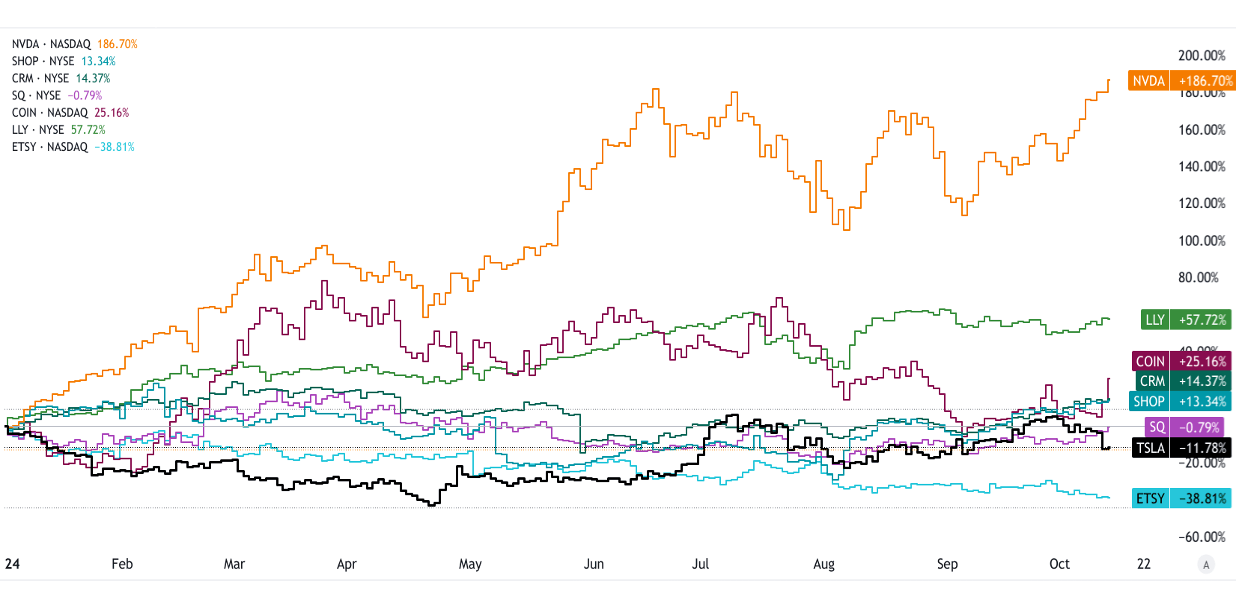
Source: tradingview.com [YTD_Price_Return]
Best Growth ETFs
Growth-focused ETFs allow investors to gain exposure to a broad portfolio of high-growth companies across multiple sectors. Here are some of the top growth ETFs:
Vanguard Growth ETF (VUG)
VUG tracks the CRSP US Large Cap Growth Index, holding companies like Apple, Amazon, and Microsoft. It has $261 billion in assets under management (AUM).
VUG provides diversified exposure to large-cap growth stocks. It delivered a 5-year return of 130%. VUG’s low expense ratio of 0.04% makes it an attractive long-term investment for growth exposure.
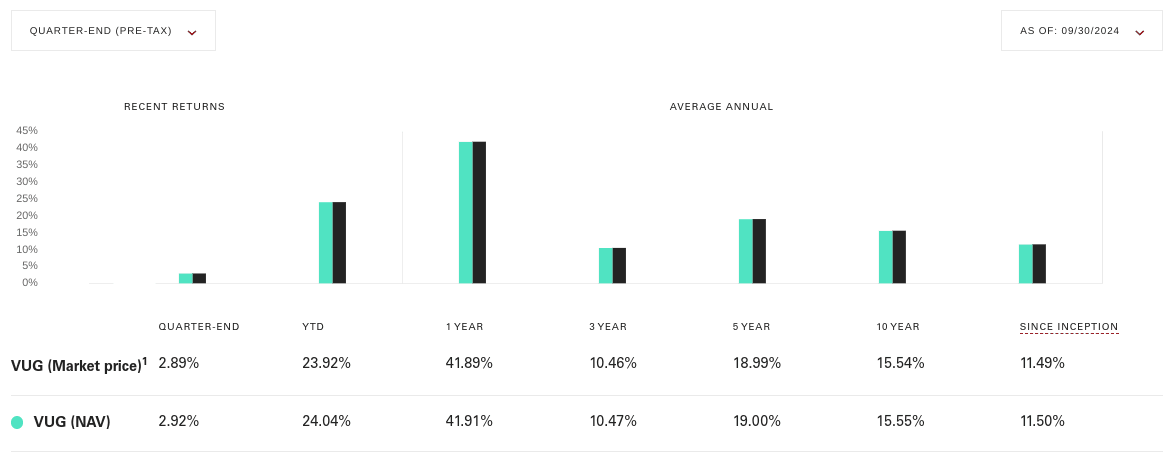
Source: advisors.vanguard.com [VUG]
iShares Russell 1000 Growth ETF (IWF)
IWF tracks the Russell 1000 Growth Index, with top holdings in Microsoft, Nvidia, and Tesla. Its AUM stands at $99 billion.
IWF has a strong performance history, with a 5-year average annual return of 134%. Its diversified portfolio across tech, consumer discretionary, and healthcare sectors positions it for continued growth.
Invesco QQQ Trust (QQQ)
QQQ tracks the Nasdaq-100 Index, with key holdings in companies like Nvidia, Apple, and Amazon. It is one of the largest ETFs with $295 billion in AUM.
QQQ is ideal for tech-heavy exposure, having delivered a 5-year return of 154%. As the technology sector continues to grow, particularly in AI and cloud computing, QQQ remains a top growth ETF.
Schwab U.S. Large-Cap Growth ETF (SCHG)
SCHG tracks the Dow Jones U.S. Large-Cap Growth Total Stock Market Index, withholdings like Apple, Nvidia, and Tesla. It has $33 billion in AUM.
SCHG provides diversified large-cap growth exposure at a low expense ratio of 0.04%. It posted a 5-year return of 147%, making it a strong choice for growth investors looking for cost-effective exposure to top-performing companies.
Vanguard Small-Cap Growth ETF (VBK)
VBK tracks the CRSP US Small Cap Growth Index and holds small-cap companies like Bill.com and Celsius.
VBK offers exposure to high-growth small-cap companies, which tend to outperform in the long term. It delivered a 5-year return of 48% and offers potential for higher returns during economic expansions.
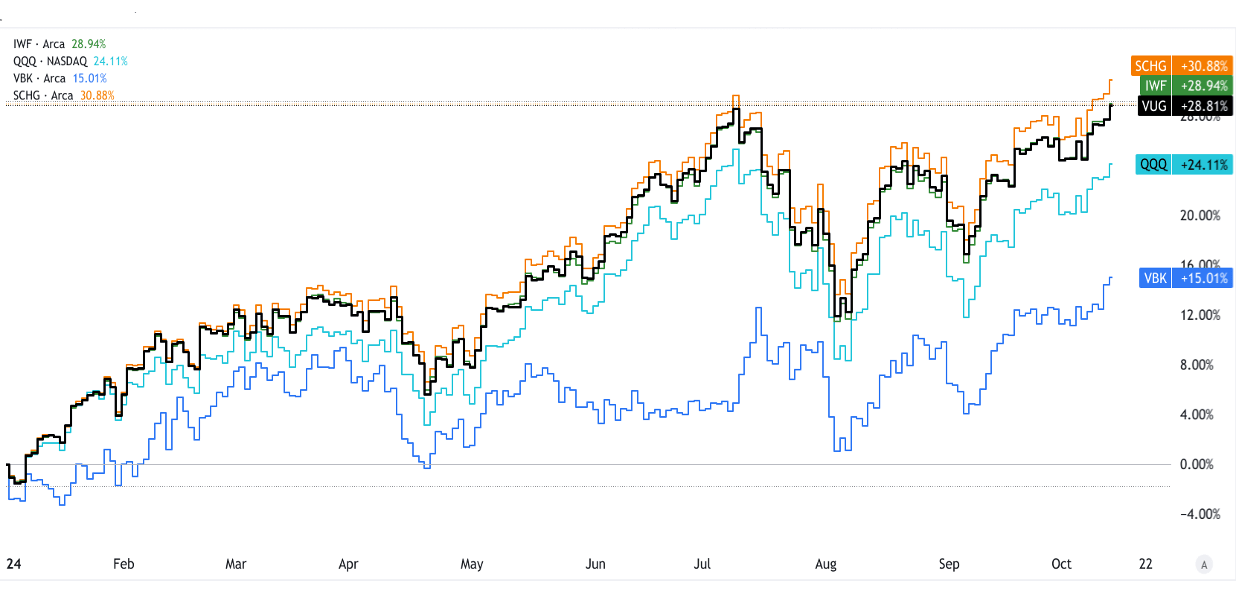
Source: tradingview.com [YTD_Price_Return]
III. Factors to Consider When Investing in Growth Stocks
Economic Growth, Inflation, and Interest Rates:
Growth stocks thrive in strong economic conditions with low inflation and interest rates. High inflation erodes purchasing power and compresses margins, while rising interest rates increase borrowing costs, reducing corporate profits. For instance, during periods of low rates (like 2020-2021), growth stocks surged as cheap capital fueled expansion. In contrast, rising rates in 2022 hurt tech-heavy growth stocks like those in the Nasdaq-100, which fell by over 30% in that year.
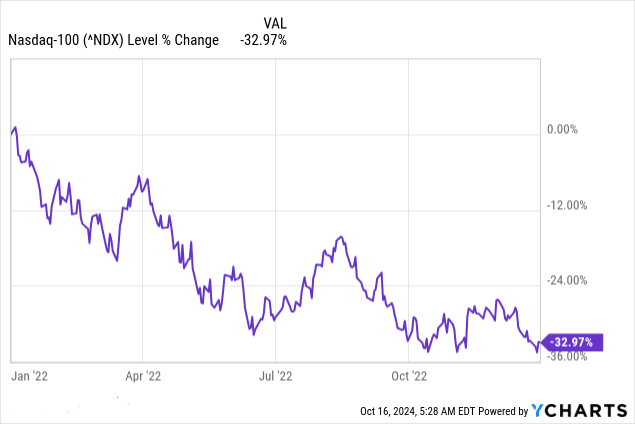
Source: Ycharts.com
Market Trends and Industry Disruption:
Growth stocks often come from sectors driving innovation and disruption, such as technology, healthcare, and renewable energy. Staying ahead of market trends is crucial—companies like Nvidia (NVDA) and Tesla (TSLA) benefit from trends in AI and electric vehicles, respectively. Investors should focus on industries with strong long-term potential and transformative growth.
Revenue, Earnings Growth, and Key Ratios (P/E, ROE):
Growth stocks are defined by their ability to post consistently high revenue and earnings growth. For example, Tesla posted a 24% YoY revenue increase in 2023. Metrics like Price-to-Earnings (P/E) ratios and Return on Equity (ROE) measure valuation and profitability. Growth stocks often have higher P/E ratios (e.g., Nvidia’s 2023 P/E of 110), reflecting future earnings expectations. ROE helps assess efficiency in using shareholder funds.
Valuation Concerns and Market Volatility:
Growth stocks often trade at high valuations, leaving them vulnerable to market corrections. For instance, Shopify (SHOP) saw its P/E exceed 1500 in 2021 before dropping during the 2022 tech selloff. Investors must balance growth potential with risks from overvaluation and high volatility, especially during economic downturns.
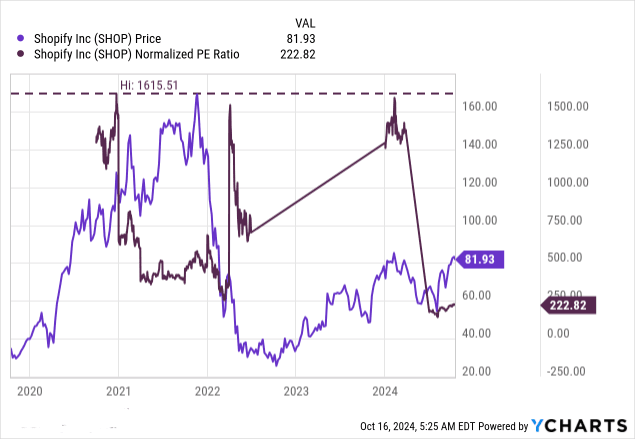
Source: Ycharts.com
IV. Growth Stocks Outlook
Long-Term Outlook for Growth Stocks
The long-term outlook for growth stocks remains positive, particularly in innovation-driven sectors such as technology, healthcare, and renewable energy. Technology companies, particularly those focused on artificial intelligence (AI), cloud computing, and semiconductors, are expected to experience robust demand. For example, the global AI market is projected to grow at a compound annual growth rate (CAGR) of 37% from 2024 to 2030, which bodes well for companies like Nvidia (NVDA) that lead in AI chips. Similarly, the renewable energy sector is positioned for significant growth, with global investments expected to exceed $1 trillion annually by 2030, benefiting companies like Tesla (TSLA).
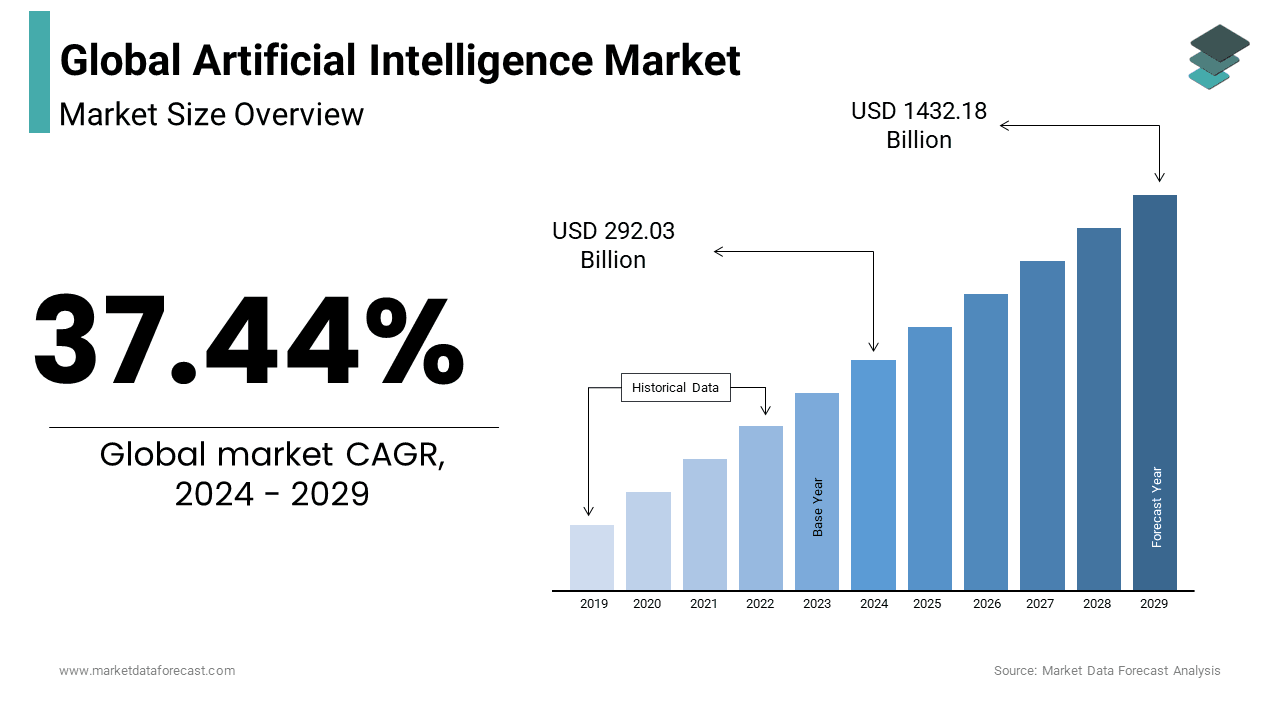
Source: marketdataforecast.com
In healthcare, aging populations and advancements in biotechnology are major drivers. Eli Lilly (LLY), for example, has promising growth prospects due to its pipeline of treatments for diabetes and Alzheimer's. However, macroeconomic factors such as inflation and interest rates will continue to play a role in the near term, as rising rates tend to negatively affect growth stocks by increasing borrowing costs and lowering future earnings expectations.
How to Find Growth Stocks
Identifying growth stocks requires a multi-layered approach:
● Use Financial Metrics: Focus on key metrics such as revenue growth, high P/E ratios, and strong Return on Equity (ROE). For example, growth companies like Nvidia’s normalized PE ratio and Price relation is a good indicator of its growth.
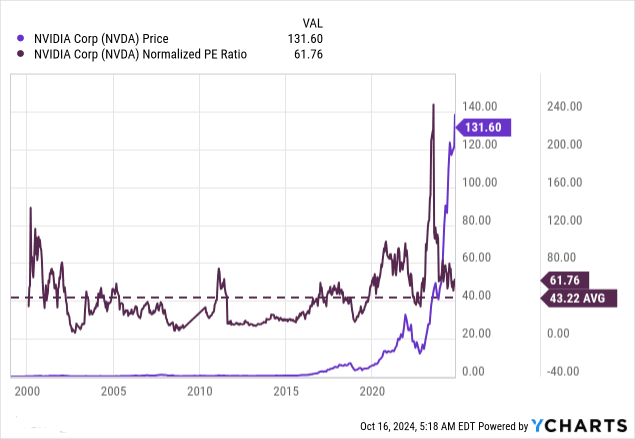
Source: Ycharts.com
● Analyze Industry Trends: Look for companies in fast-growing sectors, such as AI, biotech, or electric vehicles, where future demand is expected to outpace the overall market.
● Evaluate Company Management: Assess the vision and execution capabilities of leadership, which is crucial in navigating rapid expansion and industry shifts. Strong leaders like Elon Musk at Tesla are known for driving disruptive growth.
● Review Financial Reports: Scrutinize financial statements for consistent earnings growth, a robust balance sheet, and manageable debt levels to ensure long-term sustainability.
*Disclaimer: The content of this article is for learning purposes only and does not represent the official position of SnowBallHare, nor can it be used as investment advice.
